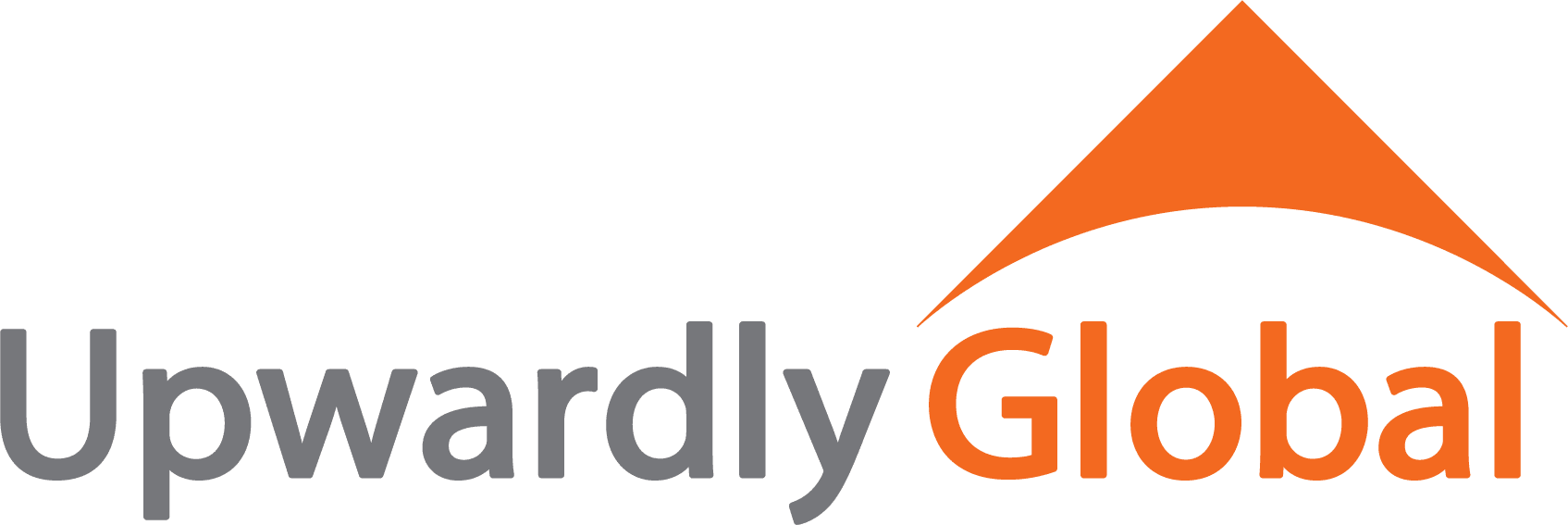How the Profession is Organized in Utah
Regulation of the Nursing Profession
Nursing in the State of Utah is regulated by the Utah Department of Commerce Division of Occupational and Professional Licensing (DOPL). DOPL manages four types of nursing licenses:
- Registered Nurse (RN)
- Licensed Practical Nurse (LPN)
- Advanced Practice Registered Nurse (APRN)
- Certified Registered Nurse Anesthetists (APRN-CRNA)
This guide assumes that you hold the equivalent of a U.S. Bachelor of Science in Nursing, so the most appropriate license type for you is a Registered Nurse (RN). It also assumes that your Utah license will be your first U.S. nursing license, so you will become an RN through licensure by examination. The National Council of State Boards of Nursing (NCSBN) administers the National Council Licensure Examination for Registered Nurses (NCLEX-RN), which is required for licensing as an RN in Utah.
Registered Nurses (RNs) and Educational Background
In the U.S., the term RN includes professionals with a variety of education levels but with certain skill sets in common. Most people become RNs after participating in one of two types of degree programs:
- Associates Degree of Nursing (ADN) – two years of study, typically in a community college
- Bachelor of Science in Nursing (BSN) – a 4-year university degree
Usually a higher level of education corresponds to greater responsibility, specialization, and advancement opportunities in the workplace. Many RNs later go on to receive masters or doctoral degrees in nursing and pursue careers as APRNs or in healthcare management, consulting, research, or education roles.
The Job Market for Nursing in Utah
Nursing is a growing field in the U.S. due to factors including such as the aging U.S. population, nurse attrition (choosing to leave the job), and the increasing complexity of nursing practice. The State of Utah has an urgent need for nurses. More than 2,500 registered nursing positions are currently unfilled, according to the Dean of the University of Utah College of Nursing.
The U.S. Bureau of Labor Statistics estimates that employment of registered nurses is expected to grow 9% from 2020 to 2030. Most nurses practice in hospital settings, but also in physicians’ offices, home healthcare, and outpatient care centers. In May 2021, the median annual pay for RNs in the U.S. was approximately $77,600.
The Job Search
Qualified RNs are in high demand and employers will compete for their skills. Bilingual and bicultural nurses can be even more attractive to employers who serve diverse communities. Because of this demand, even part-time employment can include attractive benefits such as health insurance, childcare, and tuition fees for continued education.
Eligibility for Licensing as an RN in Utah
Below is an overview of the steps to apply for an RN license in Utah.
Prepare Your Application
You will submit a Request for Authorization to Test to DOPL either through its website or by completing a manual form. Since your Utah license will be your first nursing license in the U.S., you will need to take and pass the NCLEX examination (see below). After reviewing your application, DOPL will make you eligible for the NCLEX examination.
– Credentials Evaluation
As part of your application, you will need to submit your official transcripts to DOPL. Prior to submission, you will need to obtain the following two documents:
- A Graduates of Foreign Trained Nursing Schools (CGFNS) Certification Program Verification Letter, which, among other things, requires you to pass the CGFNS Qualifying Exam
- A Credentials Evaluation Service (CES) Professional Report
– English Proficiency Exam
If your nursing program was not given solely in English (taught only in the English language and using textbooks only in the English language), or your entry-level nursing education was not completed in one of the countries listed here, you will need to successfully complete one of the following English proficiency examinations:
- Test of English as a Foreign Language (TOEFL)
- Minimum score of 83 overall
- International English Language Testing System (IELTS, academic version)
- Minimum score of 6.5 overall
- The Test of English for International Communication (TOEIC)
- Minimum score of 725 overall
Take and Pass the NCLEX
After DOPL reviews your application and makes you eligible for the NCLEX, you will register with Pearson VUE, which will administer the exam. Pearson VUE will then email you the “authorization to test” (ATT) and allow you to schedule a date and time to take the exam.
Licensure
Once you have taken and passed the NCLEX, you can proceed to apply for your license. You may submit your application online or by completing a manual form. To complete your application, you must submit your fingerprints. It can take 14 business days for DOPL to issue your license. Within 24 hours of issuance, you will receive a PDF copy of your license via email.
NCLEX-RN Examination
To become an RN in Utah, you will need to take and pass the NCLEX-RN examination.
Test Questions and Scoring
The NCLEX-RN is a five-hour computer-based examination. It uses “Computerized Adaptive Testing” (CAT), which means that the test adjusts its difficulty level, content, and number of questions based on your answers. Each time you answer an item (question), the computer re-estimates your ability based on your prior answers until it is 95% certain that your abilities are either above or below the passing standard. More information regarding CAT is available on the NCSBN website.
The computer will decide whether you have passed the exam using one of three methods: the 95% confidence rule, the maximum-length exam rule, and the run-out-of-time (R.O.O.T.) rule. More information regarding each of those methods is available on the NCSBN website.
The exam mostly comprises of multiple choice questions, but other question types are also included. You are not allowed to skip any questions, and you should avoid making random guesses as this can quickly lower your score.
The NCSBN implemented a number of changes to the NCLEX-RN due to the COVID-19 pandemic, including changing the length of the exam. The minimum number of items that will be shown during the exam is 75, while the maximum number of items is 145. Of those questions, 15 questions will be “pretest items,” that are being evaluated and will not contribute to your score. You will not know which of the questions are “pretest items,” so you should do your best to answer each question.
Test Content
The content of the NCLEX-RN concentrates on the patient as the focus of care. The 2019 NCLEX-RN plan, which is effective between April 1, 2019 and March 31, 2023, tests the following content areas:
- Safe and Effective Care Environment
- Management of Care (17-23%)
- Safety and Infection Control (9-15%)
- Health Promotion and Maintenance (6-12%)
- Psychosocial Integrity (6-12%)
- Physiological Integrity
- Basic Care and Comfort (6-12%)
- Pharmacological and Parenteral Therapies (12-18%)
- Reduction of Risk Potential (9-15%)
- Physiological Adaptation (11-17%)
Scheduling and Testing Site Procedures
Once you receive your ATT, you should immediately schedule your NCLEX-RN examination with Pearson VUE. The ATT is valid for only 90 days, and test centers may fill up quickly.
If it is your first time taking the exam, you will be offered an appointment within 30 days of your attempt to schedule the exam. Otherwise, you will be offered an appointment within 45 days. However, you may decline those appointments and schedule for a later date within your ATT period.
More information regarding scheduling and testing site procedures are available in the Candidate Bulletin published by NCSBN.
Preparing for the NCLEX-RN
There are many different resources that can help you prepare for the content and the CAT technology of the NCLEX-RN. Consider investing in test preparation, as it may save you time and money by not having to pay to retake the test.
NCSBN has also published NCLEX-RN practice exams that you may use in your preparation.
Retaking the NCLEX-RN
If you fail the NCLEX-RN exam, you will receive a Candidate Performance Report that shows the areas that need improvement. You may retake the NCLEX-RN after waiting 45 days.
Time and Costs
The minimum fees of licensing as a Registered Nurse in Utah include:
- CGFNS Certification Program: $475
- CES Professional Report: $390
- English proficiency examinations (if needed): varies depending on the examination
- NCLEX-RN (through Pearson VUE): $200
- DOPL Licensure: $90
The actual time and costs of evaluating your foreign degree and achieving licensing as a RN in Utah depends on many factors, including:
- The completeness of your educational and professional records
- The efficiency of your home country’s system in compiling and transmitting your university records and verification of licensing
- Your fingerprint evaluation and criminal background check
- Your performance on the National Council Licensure Examination (NCLEX)
- Your free time and financial resources
Other Careers and Credentials
Lower Level Opportunities
You may want to consider taking a lower-level job in healthcare in the short-term that can help you meet longer-term goals of licensing as a RN.
Preparing for the NCLEX can take time. Working in healthcare in a different way and with fewer responsibilities may offer you some advantages, such as:
- Employers paying tuition and fees associated with the NCLEX and licensing
- More energy to focus on studying
- A chance to adapt to the U.S. healthcare system and workplace culture in a lower-pressure environment
You should be honest with your employer about your long-term plans and be sure that they have benefits such as tuition reimbursement or schedule flexibility that will support your goals.
– Certified Nursing Assistant
Certified Nursing Assistants (“CNAs”) are also referred to as nurses’ aides or orderlies. CNAs have limited responsibilities and work under nurse supervision. To become a CNA in Utah, you need to pass the Utah Nursing Assistant Registry (UNAR) exam, which includes knowledge and skill tests. While you are not required to complete a state-approved nursing assistant training program in order to become a CNA, you may be required to complete such a training program if you fail the exam.
More information on the requirements for becoming a CNA is available on the Utah Nursing Assistant Registry website.
– Medical Language Interpreter
If you are bilingual and a strong communicator, you may want to look into opportunities to work at a hospital as an interpreter. To become a certified Medical Language Interpreter in Utah, you need to pass certain examinations (more information is available on DOPL’s Medical Language Interpreter licensing webpage). You are more likely to have benefits such as tuition reimbursement if you find work as a direct employee of a healthcare facility, instead of working for a company that provides interpretation services to hospitals. You may also consider directly contacting human resource departments at hospitals to find out more.
Higher Level Opportunities
– Advanced Practice Registered Nurse
After you receive your RN license, you may find that you want to continue your professional development and obtain master’s or post-master’s degree training to qualify as an Advanced Practice Registered Nurse (APRN). There are four advanced nursing roles: nurse practitioner, nurse midwife, clinical nurse specialist and nurse anesthetist. More information on becoming an APRN is available on the DOPL website.
Beyond Licensing
Joining a Professional Association
State and national associations for nurses provide opportunities for professional development and networking. They also help set acceptable working conditions for nurses and give information and opinions on policy in Utah and across the U.S. Their websites may offer useful information to nursing candidates about the licensing and examination process, including test preparation. They often also provide Continuing Education to members as well.
There are many other professional associations for nurses that cater to specific disciplines, job types, ethnicity, gender, and religion of registered nurses.
License Renewals
Once you have obtained your RN license, you will need to renew your license every 2 years. As part of the renewal process, you will need to certify that you have completed either 400 hours of licensed practice, or 30 hours of approved continuing education, or 200 hours of licensed practice plus 15 hours of approved continuing education. You will also need to complete online suicide prevention training.
Licensing Mobility (Reciprocity)
The State of Utah is signatory to the Nurse Licensure Compact. If you obtain a Utah nursing license, you will also be able to obtain a multi-state license that allows you to practice in any of the other states that have signed the Compact. Not all states have signed the Compact, however. Therefore, if you obtain your Utah state RN license and plan to move to another state, you should confirm whether that state is also signatory to the Compact or if it has separate licensing requirements.
The NCSBN website has more information about the Compact, including which states have currently signed the Compact.
Tips
- Provide Complete Documents: Nursing foreign degree evaluation services require that your university and licensing authority send transcripts directly to them. Invest the time and money early to facilitate this process. Providing additional documentation about your program of study, such as syllabi and course descriptions, can make the most of your degree evaluation. Making an effort here can result in significant savings of time and money by minimizing the gaps in comparing your degree to its U.S. equivalent.
- Get Your Questions Answered: Be your own advocate through the licensing process. Seek clarification about questions and concerns directly from official sources. If you feel your degree has been misinterpreted or you do not understand an aspect of the process, organize your questions and contact DOPL and/or Pearson VUE (as appropriate) and ask for assistance.
- Invest in Test Preparation: If you can afford it, invest in test preparation. Invest your money wisely now to make your licensing process a success sooner.
- Be Flexible in Your Job Search: Build professional networks! Consider employment in healthcare, such as becoming a CNA, to give you a lower-stress job that allows you to study for licensing and that opens opportunities to meet employers. If you are overqualified for the positions you are applying for, explain how your plans can bring long-term value to the employer.


